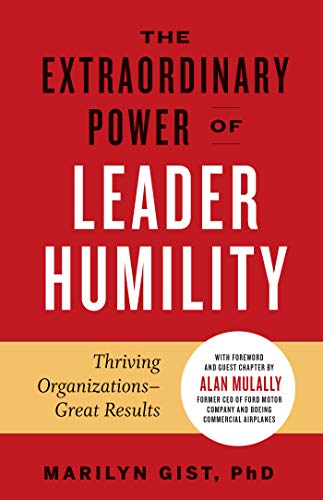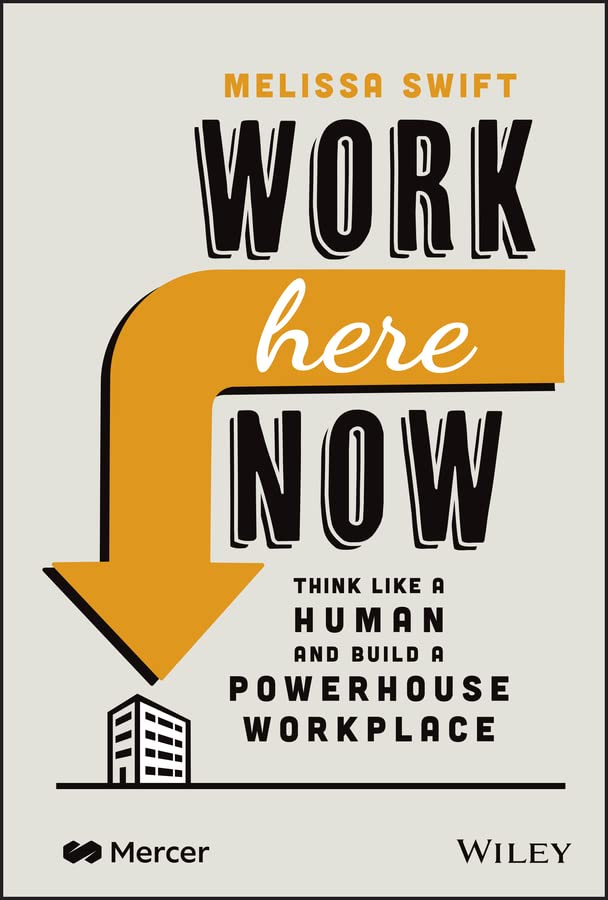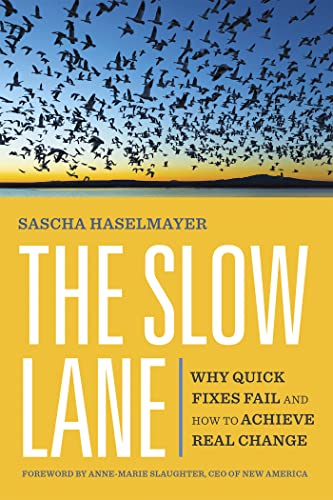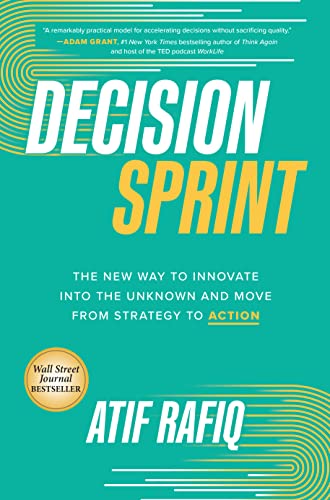
Even though it is the middle of summer, we remain busy at the quarterly journal Leader to Leader, where I am Managing Editor. We recently published our Summer 2023 issue number 109, and I’ve included takeaways from each of the articles below. You can also find takeaways from the Spring 2023 issue in my May 10 blog post.
We recently published a special online issue, The Future of Work, which is free to read for a limited time. It contains 16 articles by leaders/thought leaders such as Jo Ann Jenkins, the CEO of AARP; emotional intelligence pioneer Daniel Goleman; London Business School professor Herminia Ibarra; leadership futurist Jacob Morgan; and global health leaders Roopa Dhatt and Ann Keeling.
And we are working on a super-meaningful Fall 2023 issue, which will commemorate the life and leadership of our founder and longtime Editor-in-Chief, Frances Hesselbein, who passed away last December at the age of 107.
In the meantime, I hope you find the articles and takeaways below to be inspirational as you enjoy the rest of the summer season.
On the Precarious Precipice of a Whole New World
Columnist: Sarah McArthur, Editor-in-Chief, Leader to Leader
Article: “A Great Requirement of Human Intelligence and Leadership for the 21st Century”
Sample quote:
“That’s why when using such a powerful tool as ChatGPT, it is the responsibility of the user to review the content the tool creates carefully to ensure meanings aren’t slightly or thoroughly misconstrued in composition and/or translation. We mustn’t blindly have our new tool create content for us and trust that it will be correct or right. Such lack of responsibility will be devastating to our already fragile, uncertain, and untrusting global society.
This brief column barely scratches the surface of this subject. Suffice to say we are on the precarious precipice of a whole new world. And without sentiment, reason, judgment, or conscience itself, the responsibility of what this tool (and others like it) can and will do is with the creators and the users. And, as such, we must require that we hold ourselves and all involved accountable and responsible to the highest principles, respect for all, integrity, humility, love, and service, if we are to use this incredible tool responsibly to create value for all.”
An Individual’s Core Virtues
Authors: Marilyn Gist and Alan Mulally
Article: “The Case for Leader Morality”
Sample quote:
“Although leadership is widely discussed, interest in it often focuses on behavior, strategy, and systems with an eye toward improving outcomes. In business, those outcomes are typically financial and often driven by the short-term demands of investors. In legislative arms of government, the outcomes tend to emphasize winning in ways that appeal to one’s constituents over others. In the nonprofit sector, outcomes focus on securing funding for service delivery, often with limited accountability for return on investment.
So, in selecting leaders who will deliver well on these outcomes, we typically emphasize personal drive and people skills. Largely missing from our discussion of leadership is morality—the core virtues an individual has that guide how he or she actually determines what is the right thing to do and behaves accordingly. This article explains what leader morality is and why it is important for us to elevate this topic in discussions of leadership.”
Regulatory Flexibility and Agility
Authors: William D. Eggers and Donald F. Kettl
Article: “Bridgebuilding for a New Vision of Government”
Sample quote:
“Innovative approaches may not fit well into regulations designed for older technologies and business models. When designing new methods of dealing with endemic societal problems, leaders need to ensure regulatory flexibility to account for experiments and encourage growth. These could include simple regulatory carveouts, like for zoning laws, or frameworks for new technology, like the FAA’s inquiry into standards for urban air mobility. Many cities have experimented with special innovation zones. Regulatory agility was increasingly important in the COVID-19 era, as governments eased restrictions to accelerate the development of new treatments and technology—such as autonomous delivery drones—to address the pandemic. In other cases, governments have created experimental sandboxes that allow the private sector to test out new technology in a protected environment.”
The Power of Visual Imagery
Article: “Walking the Leadership Tightrope”
Sample quote:
“Blog posts and articles that are accompanied by a visual image are read at a much higher rate than those with text alone. On restaurant menus, dishes that feature a picture are more likely to be ordered than those without. Would you buy a product on Amazon or eBay based just on the title and description if there was no image of the item? If you don’t know the person, are you more likely to accept a LinkedIn invitation from someone whose profile comes without, or with, a headshot? While you, of course, can’t judge a book by its cover, are you more likely to buy the book that has a jacket cover you like or the one that you don’t? And, as all business professionals have experienced: Are you more likely to pay attention to a PowerPoint presentation that features interesting, intriguing, visually stimulating images … or one filled with slide-after-slide of black-and-white bullet points and text?”

The Ability to Lead and Drive the Public Conversation
Article: “Communications and Leadership: Not Only Entwined, But Inseparable”
Sample quote:
“What a company says is synonymous with what it is and what it believes. Taking carefully considered, courageous positions is the new standard. Whether the issue is geopolitics, rising inequality, or climate change, business leaders are expected to have a view. Employees, consumers, regulators, investors, the media, governance experts, and our children are watching.
Because of this increased scrutiny and the elevated stakes, communications can no longer be considered a soft skill. The ability to lead and drive the public conversation is a rock-hard competency.”
The Perils of Rushing to Action
Article: “The Slow Lane: Movements for Social Progress”
Sample quote:
“For thousands of years, people have known the perils of rushing to action. Philosophers, religions, and folktales caution us against rushing to action. Many warn us of the arrogance that comes with moving fast. Aesop, the ancient Greek storyteller, created the fable of “The Tortoise and the Hare” that has inspired countless variations over time of a slow-mover (the tortoise) beating an arrogant sprinter (the hare). In Aesop’s telling, the overconfident hare takes a long nap during the race, letting the slow-and-steady tortoise arrive faster. The meaning here is ambiguous. Is it a warning against arrogance, or a celebration that perseverance and steadiness will prevail? In some variants of the story, it is trickery that prevails, as is the case in the Grimms’ fairy tale “The Hare and the Hedgehog,” where the hedgehog places his similar-looking wife near the finishing line. The incredulous hare demands revenge-runs over and over, until he dies of exhaustion.”
Flip the Script
Article: “From Prison to Productivity: Why You Should Hire Formerly Incarcerated People”
Sample quote:
“For years, based on a blog I wrote, I’ve conducted an exercise with audiences called “The Right People Look Wrong.” The audience breaks up into small groups, and each group has to list all of the reasons you wouldn’t hire someone. Then you challenge the groups—take each reason not to hire someone, and flip it—why would that mean you should hire them? Inevitably, the groups excel at turning each negative into a positive. What would this exercise look like when considering formerly incarcerated people? For example, current employees might be wary of working with people who’ve spent time in a rough-and-tumble prison environment. But flip the script on that assumption, and you begin to appreciate the skills that group acquired to navigate a complex, hierarchical landscape. A reason not to hire becomes a reason to hire.”
Transformational Change and Paradigm Shifts
Authors: Frederick A. Miller and Judith H. Katz
Article: “No Going Back: It is Time to Accelerate Organization Culture Change”
Sample quote:
“Transformational change is not just happening in the corporate sector; it is happening in all sectors. The paradigm shift is a sea change no different than the ice caps melting, and the weather changes we are experiencing. No matter where you are on earth, either today or some tomorrow, it will impact you. And because its impact is everywhere, there is no avoiding it, no turning back. Actions are needed that adjust to and address this new reality. The challenge is that no one can know for sure what the new reality will be for the workplace, for the social contract between employer and employee that is evolving. The need today is to give these current opportunities and challenges your best thinking and act as fast as possible to respond to today’s situations.”

Conflicting Leadership Expectations
Author: Bill Treasurer
Article: “Leadership Essentials for Complicated Times”
Sample quote:
“Today’s realities are heaped on top of a role that has always been uniquely challenging. The expectations many people have of their leaders have always been conflicting, inflated, and unrealistic. They want leaders to provide high-level vision and be strategic, yet they also want them to be intensely operational and tactical. They want leaders to be decisive and work with urgency, yet they also want them to be inclusive and involve the voices of everyone. They want leaders to innovate and experiment by taking bold risks, yet they also want those risks to be minimized, mitigated, and controlled. They want leaders to be intellectually smart, yet also to be attuned to their own emotions and the emotions of others. They want leaders who are tough and hold people accountable, yet who are compassionate and foster psychological safety. They want leaders who exude confidence and self-assuredness, yet are grounded, authentic, and humble. It’s a lot to ask for.”
New Thinking on Office Conversations
Sample quote:
“Any conversation that bears the potential for emotionality or conflict is best handled in the office. It’s much easier to read and address other people’s emotions and manage any conflicts face-to-face, rather than by videoconference.
That means any conversations that have performance evaluation overtones should rightly occur in the office. The content might range from weekly 1-on-1 conversations between team members and team leads that assesses how the former performed for the last week and what they will do next week, to a quarterly or annual performance review. Similarly, it’s best to handle in-person any human resource concerns.”
An Understanding of Diverse Perspectives and Convictions
Authors: Ingo Winkler and Sabine Pelzmann
Article: “We Have to Develop Leaders’ Ability to Resonate”
Sample quote:
“For many, it is common sense that our current world within and outside organizations is volatile, uncertain, complex, and ambiguous. In addition, our collective experience with the Covid-19 pandemic, current threats to global security, and the urgent need to become more sustainable in ecological and social terms bring to the surface the call for competencies such as “handling complexity,” “handling uncertainty,” and “handling ambiguity,” while paving a way into a viable future. Questions arise such as: How can we enable organizations and their members to cope with societal, environmental, and economic challenges that are not yet foreseeable? How can we prepare organizations to use technologies that do not yet exist? What do people need to navigate in a networked world that requires an understanding of diverse perspectives and convictions? How do we interact with each other respectfully and responsibly while acting towards environmental and social sustainability?”

Navigating Ambiguity
Article: “The Importance of Upstream Work in Organizations”
Sample quote from Atif Rafiq, longtime corporate executive (Amazon, AOL, McDonald’s, Volvo, etc.); author of the book DECISION SPRINT: The New Way to Innovate into the Unknown and Move from Strategy to Action:
“Ambiguity is like kryptonite for organizations of all types. Most organizations after they reach a certain scale (usually the creation of distinct functions) need collaboration across roles when it comes to navigating ambiguity within their top initiatives. Collaboration matters because no one part of the organization has all the answers, or the ability to surface relevant questions to begin with. People factors are a huge in most organizations as well. Authority, command and control, groupthink are just some common people factors that can lead to pitfalls when innovating or solving problems.”
Look to Reputable, Science-Backed Resources
Article: “Exploring the Interconnection Between Creativity and Constraints”
Sample quote from Adam Damadzic and Kelsey E. Medeiros of the College of Business Administration, University of Nebraska Omaha:
“Given the popularity of creativity, there is a lot of noise to sift through when trying to understand creativity. Stereotypes plague the field; stereotypes that have been regularly debunked by science. Blue sky thinking vs constraints is one great example of this. When looking to improve your creativity, it’s best to look to reputable, science-backed resources. Although there are many popular business leaders who tout their practices, the fact is that these can be idiosyncratic to a specific team or organization. In contrast, science-backed resources will attempt to reduce the noise associated with a specific team or organization to understand what works across settings.”
